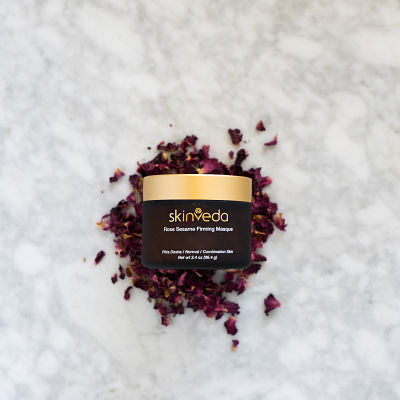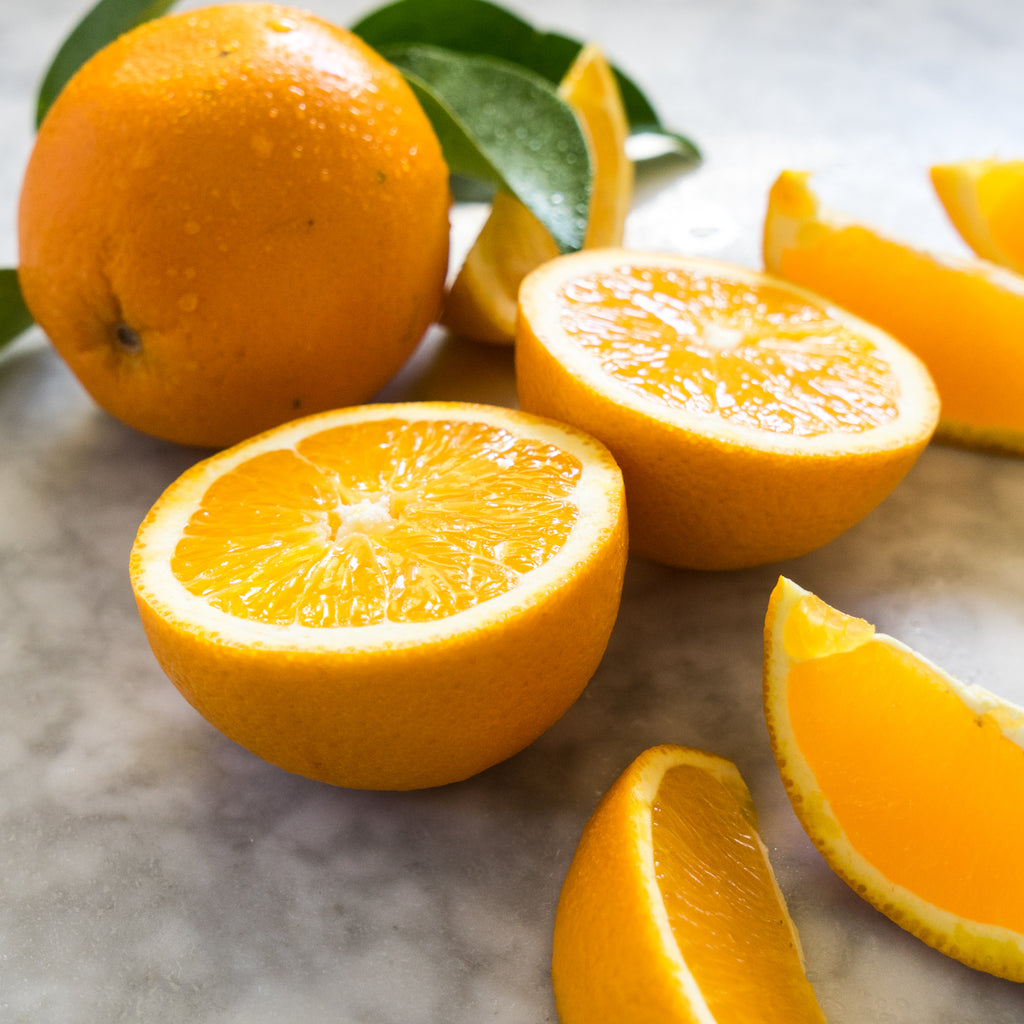News
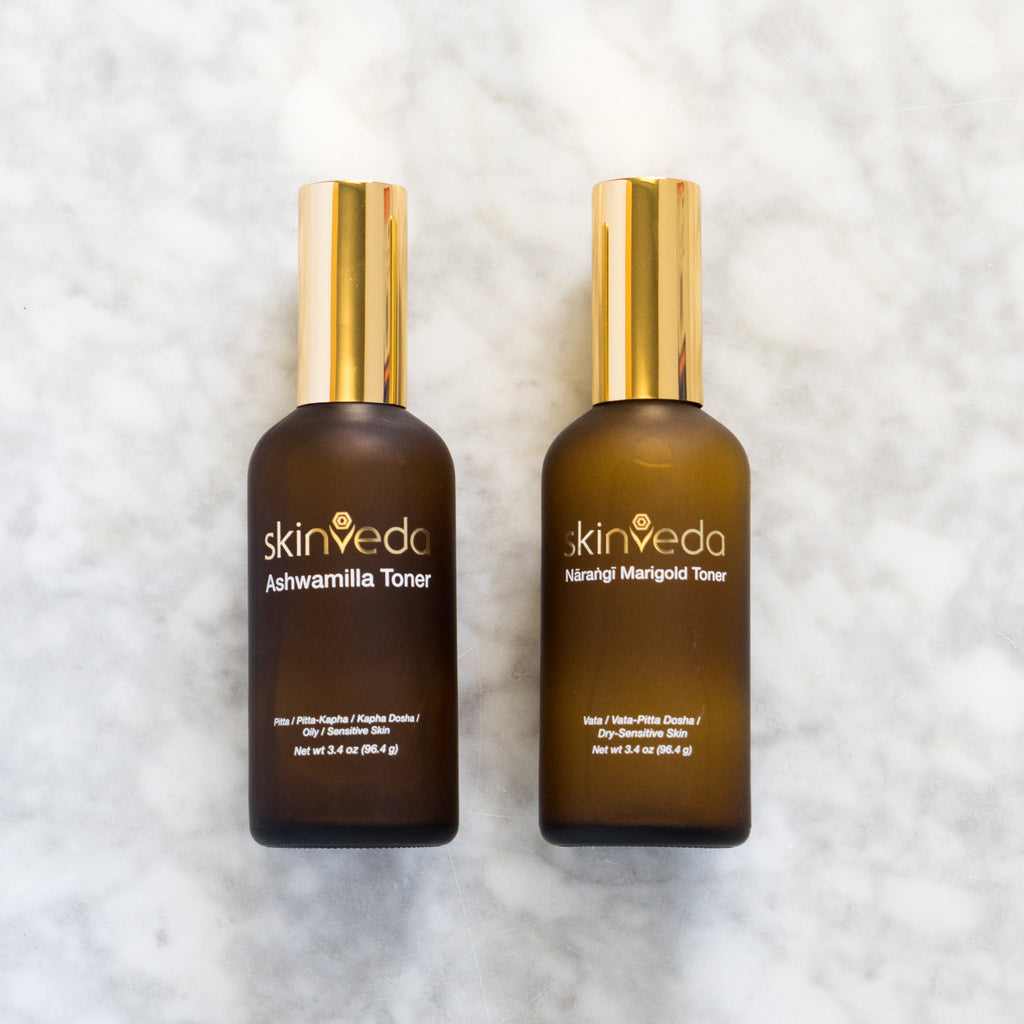
Dry versus Dehydrated Skin - how to tell the difference?
We are often confused whether we are dry or dehydrated. Here is a simple way to tell. But, first, let us understand the differences. Dry skin is a a consequence of not having enough oil production in your skin. Dehydrated skin means your skin lacks water. You can be dry and dehydrated, but you cannot bedry and oily. Our skin needs a balance of moisture (oil) and hydration (water) to keep the barrier intactwithout being compromised. A compromised dermal-epidermal junction can mean a more sensitive skin. Dehydrated skin cannot be solved by drinking water although drinking water is definitely important to stay hydrated internally. But our skin needs hydration that can be achieved through the following ways:i) Using a water-based non-alcoholic toner can pump up the hydration especially when loadedwith hydrating ingredients such as aloe vera gel, plant saccharides, hyaluronic acid, asexamples.ii) Using a moisturizer high in humectants (like glycerin, sodium hyaluronate, sodium PCA,sorbitol, allantoin, and algae).iii) Washing your face with gentle pH balanced cleansers without any sulfates.
Dry skin can be a result of not having enough sebum production that is typical in a normal skin. This could be due to several reasons including the environment, genetics, medications, stress, medical conditions (like diabetes, psoriasis, eczema), skincare products / chemicals and their side effects. The symptoms may include itchiness, flakiness, redness, compromised barrier or broken skin, feeling oftightness on the face, prone to sunburns, rough patches, scaly skin. To help with these symptoms, it is important to moisturize the skin immediately after a shower and use lotions, oils rich in fatty acids,ceramides, and humectants. Flaxseed oil, Dhatelo Oil, Jojoba Oil are extremely useful for dry skin. For example, our Youth Restoring Abhyanga Face and Body Oil is enriched with Wild Flax Oil, Saffron, Sesame seed oil, and Dhatelo oil (a rich oil from the foothills of the Himalayas that mimics our skin’s fatty acid profile). Taking an oatmeal bath can also help alleviate symptoms of dry skin. Our Calendula Horsechestnut Firming & Moisturizing cream is enriched with gluten-free oats. It is important to not expose your skin to sulfates, harsh chemicals, including alcohol. A lifestyle change can help. Werecommend you take the dosha quiz to help you understand your mind-body type.

Spring Cleansing starts with?
Spring cleansing is based on the idea that the body accumulates toxins over time from various sources, such as environmental pollutants, food additives, and stress. By following a spring cleansing program, we seek to support the body's natural detoxification processes and eliminate these accumulated toxins, leading to improved energy, digestion, and overall health. In nature, as well as in most religions, spring is a time of fasting and spiritual austerity. Flowers emerge from the melting snow as the dormant, dark, winter weather is replaced by the cool, damp days of spring. The days become longer and brighter. Snow melts and streams swell with run-off.
Our bodies assimilate this excess dampness or kapha which can lead to increased congestion in the sinuses, lungs, and lymphatic system. Spring colds, coughs, and allergies may leave us feeling sluggish and foggy. Everyone experiences these seasonal influences to some degree, regardless of their constitution or doshic balance or combination. Our bodies are working to shake off the lethargy of winter and prepare for renewal.
As studies now confirm, each spring our microbiome begins to explode with fat-burning microbes that help us switch from burning carbohydrates in the winter to burning fat in the spring. According to Ayurveda, the fat we burn in spring is the excess we may have stored during fall and early winter feasting. Ayurveda preaches that spring is an ideal time to cleanse the body and mind, as it is a time of transition and renewal. Longer fasts are best for kapha types this time of year, while intermittent fasting is seasonally appropriate for pitta and vata types, or those with pitta or vata imbalances. Fasting does not have to be long term. The benefits of spring cleansing are abundant.
But, what is more important is to understand that our body needs plenty of hydration and eating seasonally. Seasonal eating is a dietary practice that involves consuming foods that are naturally available during a particular season. This approach to eating emphasizes the importance of eating fresh, locally grown produce that is in season, rather than relying on processed or imported foods that may not be as fresh or nutritious. Staying away from high carb vegetables, which are not in season, is nature's way of helping you flush out toxins, increase your fat burning cycle, while flushing and cleaning the liver and gallbladder to ensure maximum bile flow into the small intestines.
Examples of seasonal fruits and vegetables during these spring months include asparagus, artichokes, peas, radishes, spinach, strawberries, and rhubarb.
Remember to get plenty of sunlight during the day, and keep your night time free of bright lights. The circadian rhythm that governs our sleep-wake cycle can be disrupted due to extended late nights, traveling across time zones, or doing night shifts. I like to maintain dinacharya by practicing early morning waking up with warm lemon salt water to start my day. I avoid caffeine after 5 pm, and go to bed between 9 and 9:30 pm.
Here is a quick 10 minute recipe for you to try this spring!
Ginger-Lemongrass Soup
Ingredients:
1 tbsp chopped ginger stem
a few twigs of lemongrass (you can find this at your Asian grocery stores, or powder form at grocery stores)
Coconut Milk (1/2 can)
Green peas (1 cup)
Salt and Pepper to taste
Instructions:
1. In a pot, add 2 cups of water and begin heating it at medium-high flame until it boils.
2. As soon as it boils, add the ginger, and lemongrass and reduce flame to low setting.
3. Now add the coconut milk and peas and keep stirring occasionally for 7-8 minutes. Add salt and pepper to taste and serve with steamed rice or drink as is for supper!
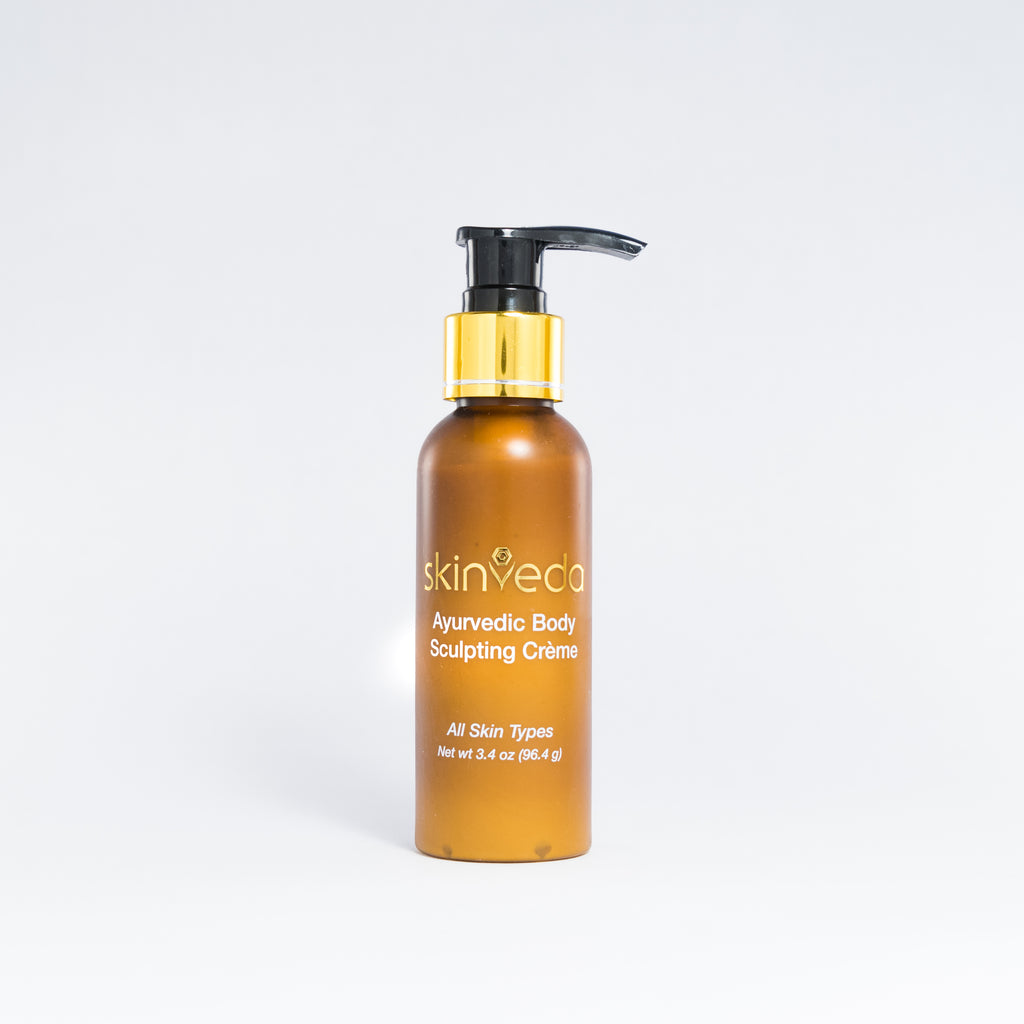
Ayurvedic Body Sculpting cream for cellulite!
According to the Oxford dictionary, Cellulite is the persistent subcutaneous fat causing dimpling of the skin, especially on women's hips and thighs. There are two types of fats: Visceral and subcutaneous fat - they are the two types of adipose tissue (fat tissue) that are found in the human body. While both types of fat are used for energy storage and insulation, they have different functions and health implications.
Subcutaneous fat is the fat that is found just beneath the skin. It is the most visible type of fat in the body and is responsible for the "pinchable" areas on the body, such as love handles, belly fat, and thigh fat. Subcutaneous fat is relatively harmless and plays a role in regulating body temperature, cushioning internal organs, and providing energy during periods of starvation.
Visceral fat, on the other hand, is the fat that surrounds the internal organs, such as the liver, pancreas, and intestines. Unlike subcutaneous fat, visceral fat is not visible from the outside and can only be detected through medical imaging techniques such as MRI or CT scans. Visceral fat is considered more dangerous than subcutaneous fat because it is metabolically active and can release hormones and other molecules that contribute to inflammation and insulin resistance.
Visceral fat has been linked to an increased risk of several health problems, including type 2 diabetes, heart disease, stroke, and certain types of cancer. In addition, visceral fat has been shown to increase levels of LDL cholesterol (the "bad" cholesterol) and decrease levels of HDL cholesterol (the "good" cholesterol), which further increases the risk of heart disease.
While both types of fat can be reduced through a combination of diet and exercise, reducing visceral fat is particularly important for overall health. Eating a healthy diet, especially eating at the right time, getting regular exercise, and managing stress can all help reduce visceral fat levels and improve health outcomes. Ayurveda plays a significant role in helping us follow a seasonal habit when eating. If you would like a free consult with Shilpi on ayurvedic clean eating for your dosha, you can book an appointment by emailing Shilpi@skinveda.com. This free service is being offered to the first 10 subscribers. Our Skinveda line has a great product for cellulite called the Ayurvedic Body Sculpting cream that has been tested for its efficacy by doctors and customers. Association of three actives of vegetal origin: extract of Glaucium flavum, extract of Euglena gracilis and caffeine facilitates the gentle and selective shedding of adipocytes. The combination of medicinal extracts from Ayurveda namely Santalbic acid or Xymeninic acid from Red sandalwood has been proven through in vitro tests to selectively shed hyper-trophied adipocytes from their substrate without destroying them and to help reduce subchronic inflammation. The Artichoke extract helps facilitate the reduction of water retention. Finally, Levan is obtained from sugarcane that helps smooth out visceral fat.
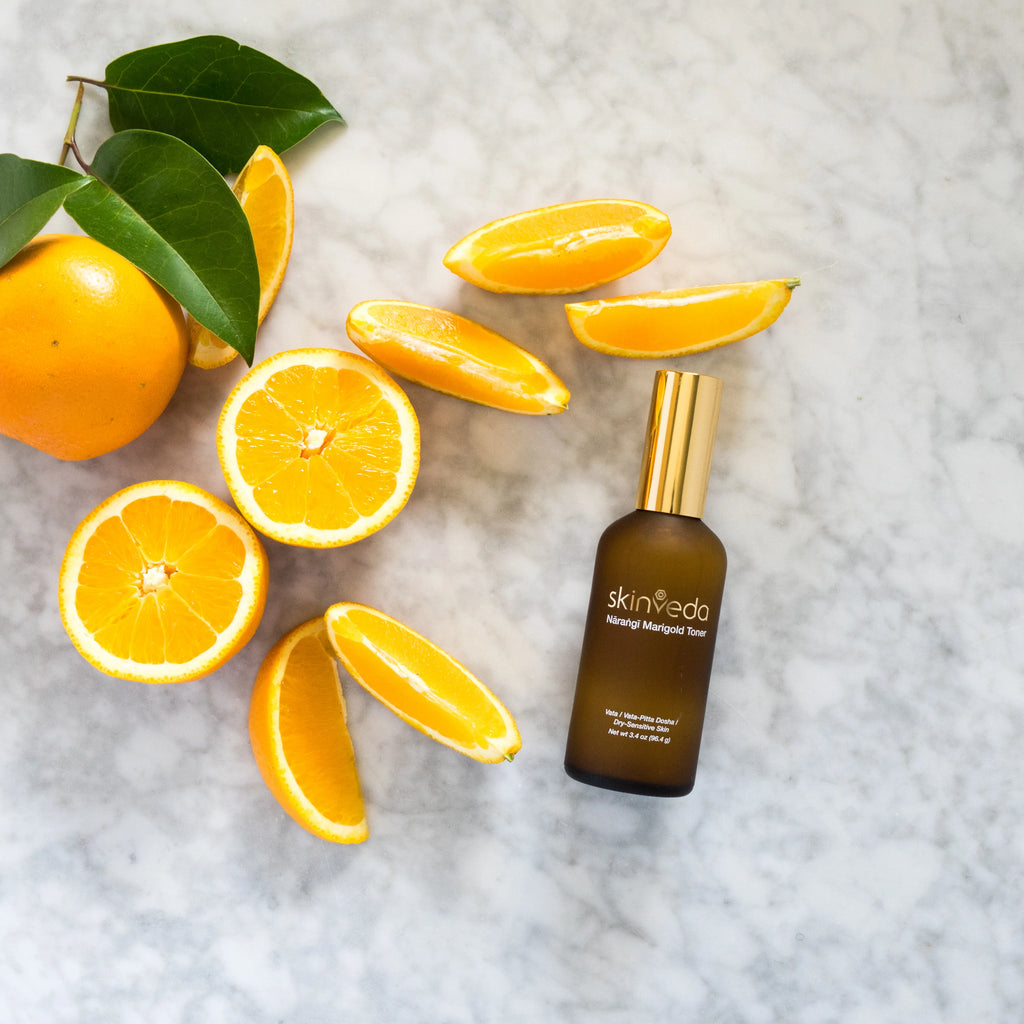
Am I dry or dehydrated?
We are often confused whether we are dry or dehydrated. Here is a simple way to tell. But, first, let us
understand the differences. Dry skin is a a consequence of not having enough oil production in your
skin. Dehydrated skin means your skin lacks water. You can be dry and dehydrated, but you cannot be
dry and oily. Our skin needs a balance of moisture (oil) and hydration (water) to keep the barrier intact
without being compromised. A compromised dermal-epidermal junction can mean a more sensitive
skin. Dehydrated skin cannot be solved by drinking water although drinking water is definitely important
to stay hydrated internally. But our skin needs hydration that can be achieved through the following
ways:
i) Using a water-based non-alcoholic toner can pump up the hydration especially when loaded
with hydrating ingredients such as aloe vera gel, plant saccharides, hyaluronic acid, as
examples.
ii) Using a moisturizer high in humectants (like glycerin, sodium hyaluronate, sodium PCA,
sorbitol, allantoin, and algae).
iii) Washing your face with gentle pH balanced cleansers without any sulfates.
Dry skin can be a result of not having enough sebum production that is typical in a normal skin. This
could be due to several reasons including the environment, genetics, medications, stress, medical
conditions (like diabetes, psoriasis, eczema), skincare products / chemicals and their side effects. The
symptoms may include itchiness, flakiness, redness, compromised barrier or broken skin, feeling of
tightness on the face, prone to sunburns, rough patches, scaly skin. To help with these symptoms, it is
important to moisturize the skin immediately after a shower and use lotions, oils rich in fatty acids,
ceramides, and humectants. Flaxseed oil, Dhatelo Oil, Jojoba Oil are extremely useful for dry skin. For
example, our Youth Restoring Abhyanga Face & body Oil is enriched with Wild Flax Oil, Saffron, Sesame
Seed oil, and Dhatelo oil (a rich oil from the foothills of the Himalayas that mimics our skin’s fatty acid
profile). Taking an oatmeal bath can also help alleviate symptoms of dry skin. Our Calendula
Horsechestnut Firming & Moisturizing cream is enriched with gluten-free oats. It is important to not
expose your skin to sulfates, harsh chemicals, including alcohol. A lifestyle change can help. We
recommend you take the dosha quiz to help you understand your mind-body type.
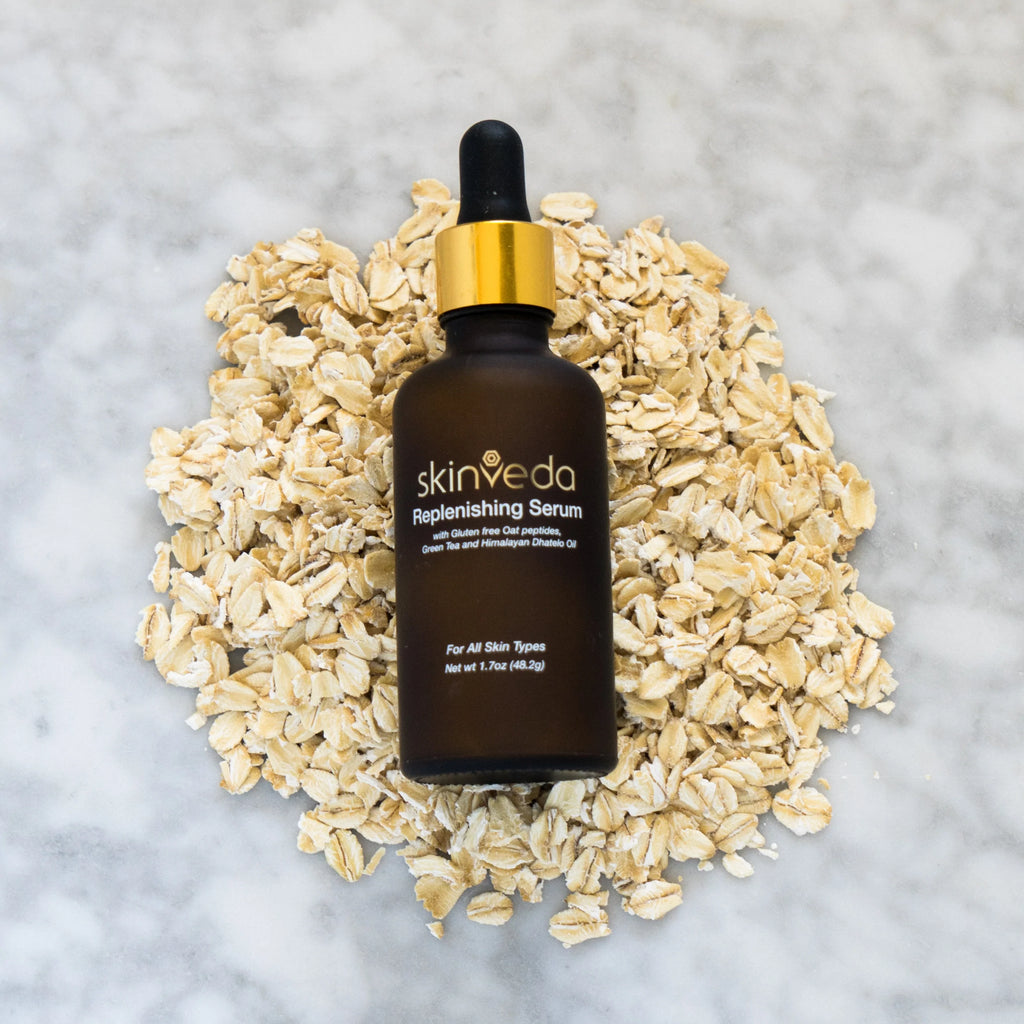
How do I know my skin type?
think again! Our skin is porous, which means that it is constantly being affected by environmental,
psychological, emotional, and chemical stress from the stuff we put into our skin. Environmental
pollution plays a huge role for people living or working where there is smog, radiation, string winds,
debris, or humid climates. While psychological and emotional stress have a direct impact on our skin,
believe it or not. When we are under emotional stress (be it a sad news, or stressful work environment,
or being a caretaker, or a new mom as a few examples), there is a physical and chemical change in our
bodies with shortening of our telomeres, and signs of aging including premature graying of hair,
wrinkles, dark circles, dull complexion, acne, rosacea, atopic dermatitis, cellulite, weight gain, or weight
loss, hair loss, brittle nails. Chemical stress can be a result of using too many harsh chemicals on your
face and body including the hand soaps. Our skin likes products at a pH of 5-7. When we use sulfate-
based shampoos, hand soaps, bar soaps on our skin, we are stripping moisture from or skin which can
have an adverse effect leading to dry, and sensitive skin more prone to atopic dermatitis, acne, and
rosacea.
So, going back to the question about determining our skin type. You must know your current state of
physical, emotional, psychological and environmental imbalances on your skin. In my next blog I will be
talking about how to determine these imbalances. Stay tuned!
The hidden toxins in personal care products all teenagers should be aware of!
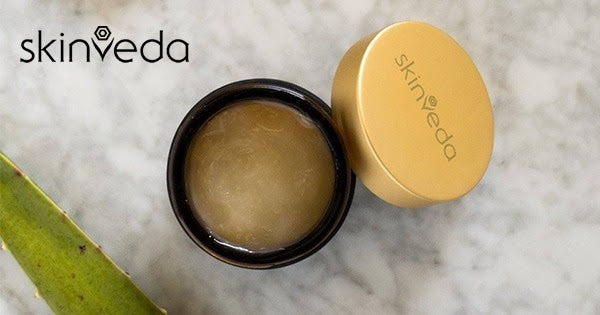
Dirty Secrets of the Beauty Industry, Part 1: Skinveda's Founder Tells Her Story
We asked some of the founders of our Indie brands to reveal a “Dirty Secret” of the conventional beauty industry – and tell us how it motivated them to make a difference.
Dirty Secrets of the Beauty Industry – Part 1: Shilpi of Skinveda
When you’re Principal Scientist at some of the largest commercial beauty brands as Shilpi was for over 18 years, you don’t miss much about how items are produced and brought to market:
"Most decisions [by large commercial beauty firms] are made based on commerce – it's all about adding a drop of that and a drop of this to bulk up the ingredient deck. When we talk about 'mass beauty', the word 'mass' is indicative of the fact that you are non-selective ...."
"I chose to start my own practice as an ethical cosmetic formulator and a brand that was solely performance-based using the highest quality plant-based ingredients that mimicked the chemistry of their synthetic lab-produced counterparts."
"As a scientist and an entrepreneur with experience in cosmetics formulation, pharmaceutical drug development and plant-based science, I have the advantage of lookimg at all sides of a formulation."
"I believe in 'Less is More' ... add a few high quality ingredients in the right amounts in synergy and customized to each individual’s skin as well as mind-body constitution."
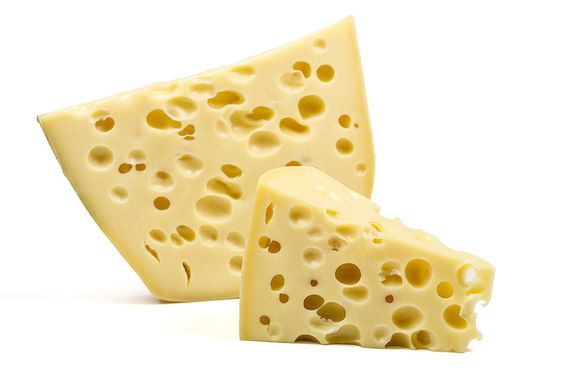
ENLARGED pores!
We are so pleased to share this blog on www.truthinaging written by the founder, Marta Wohrle.
I am prone to the odd open pore and, like most of us, can become obsessed with treating them and even (I know, I know….) squeezing them. Recently, I had an epiphany and it has led me to find successful solutions to minimize, refine and even obliterate open pores without jabbing at them with pincered fingernails.
The term pore refers to the openings of adnexa at the skin surface. Open pores are associated with sweat secretion and oily skin. I do think that the open pores on my nose qualify as oil/sebum related. There is also the clogged pore issue. As sebum is produced by the skin’s oil glands it cannot reach the surface and starts accumulating inside the pore, expanding its diameter. Dead skin cells, oils, and bacteria pool in this follicular opening, often leading to the formation of blackheads.
However, the activity of the sebaceous glands diminishes with age whereas the number of visible pores appears to increase with age. So something else must be going on. The open pore or two smack in the middle of my cheek where the skin is dryish did not look to be the result of oil, no amount of exfoliation helped and my fingers twitched every time I looked in the mirror. Then I reflected on another cause of open pores.
The theory is that the pore walls are slackening due to decline of the matrix (elastin and collagen). And, according to the Silab (a laboratory that has developed an ingredient called p-Refinyl based on lentil extract), dilated pores are also caused by an abnormally accelerated keratinization process, leading to the accumulation of nucleated cells around the pores.
So based on all of this, there are three types of problematic pores and, therefore, they require different solutions:
Oil and Sebum-Related Open Pores
Look for salicylic acid since it is oil-soluble and lipophilic and penetrates sebum filled follicles and cleans out clogged pores. You'll find it in ClarityRx Fix It 2% Pore Perfecting Solution ($34 in the shop). A natural form of salicylic acid is found in neem, which is a key ingredient inSkinveda Amlaki Chamomile Cleansing Crème ($27 in the shop).
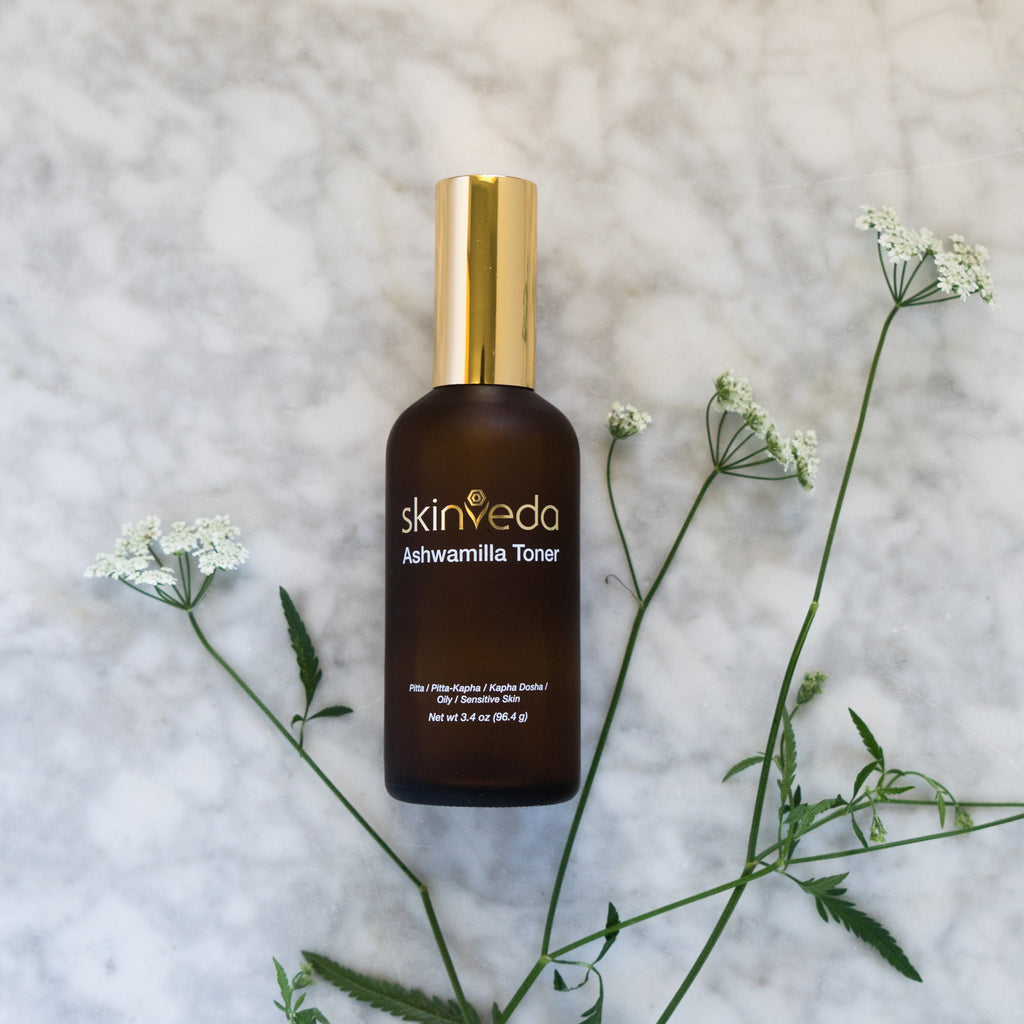
Adaptogens and cortisol levels
Today we will talk about a powerful adaptogen - Ashwagandha (latin name: Withania somnifera) an ancient Ayurvedic healing herb that has been used for centuries to heal a wide variety of conditions. This powerful herb is best known for its restorative benefits. In the Sanskrit language, Ashwagandha translates to “the smell of a horse”. This translation indicates that the herb conveys the agility and strength of a stallion. Traditionally, this herb has been administered to people to help them strengthen the immune system following an illness.
This herb belongs to the same family as the tomato plant. It bears red fruit that is close to the size of a raisin, which grows inside of its yellow oval-shaped leaves and flowers.
There are many applications of Ashwagandha in the modern world. It is still used to boost and strengthen immune systems, but can also be used for a variety of other reasons. If you tend to struggle with symptoms such as fatigue, chronic stress, lack of energy, or difficulty concentrating, adding Ashwagandha to your diet can help alleviate these symptoms and refresh your sense of well-being.
In addition to healing the above symptoms, Ashwagandha is used to assist with many other parts of your health.
Ashwagandha’s ability to lower cortisol levels has a powerful effect when it comes to having a successful experience with weight loss attempts. That is because of cortisol, a hormone that is secreted by the adrenal glands as a response to stress can occasionally become severely elevated or elevated for a prolonged period of time. This happens when we are under a significant amount of stress. When cortisol levels are healthy and average, our bodies will emanate that through our balanced well-being. However, when they are elevated, particularly for a prolonged period of time, we can start to experience some of the most commonly recognized symptoms of stress: headaches, insomnia, stress, and more. If heightened cortisol levels are severe in an individual, they are at increased risk for a variety of health problems including things such as stroke, heart disease, metabolic syndrome, diabetes, and obesity.
Cortisol plays a role in your body’s ability to metabolize fat and carbohydrates and turn them into energy. However, when your body’s cortisol levels are abnormal, your body will start to store more fat than necessary. Cortisol has even been known to affect where the weight is put on, with studies showing that individuals with increased cortisol levels have been known to develop more abdominal fat instead of hip fat. This specific type of fat is considered much more harmful to your health, as it has the ability to promote the development of chronic diseases.
In addition to reducing potentially dangerous cortisol levels, Ashwagandha can aid in the stabilisation of blood sugar levels. When cortisol levels are higher, they will trigger the release of insulin into your body. This particular hormone – insulin – is known for enabling your body to use blood sugar for energy or to store it as fat. If you are consistently experiencing surges in your insulin levels, your cells will eventually stop responding to insulin as well, which can result in insulin resistance or even type 2 diabetes.
Studies that have been done on Ashwagandha have shown that the herbs ability to help with weight loss goals are promising. They have found that the plant has been able to effectively lower serum levels of cortisol up to about 26%. Additionally, it has been able to significantly improve the insulin sensitivity index, while also lowering blood sugar levels with levels that can be comparable to anti-diabetic drugs. Finally, the herb has also been found to assist with decreasing LDL, also known as the bad cholesterol, and triglycerides.
Ashwagandha has an excellent ability to assist people with helping lose weight, especially those who may already be suffering from some of the effects of metabolic syndrome. As well, it is a great supplement for those who may be experiencing weight gain as a result of severe or ongoing increased stress levels. If you are looking for assistance in shedding your weight, particularly weight that has been acquired due to medical ailments, you could benefit greatly from Ashwagandha and its powerful healing abilities.
Remember, it is important that if you are currently experiencing any medical ailments, are pregnant, or are using medicine for any reason, that you consult your doctor prior to using Ashwagandha or any other herbal remedy. Using herbal medicines without consulting with your doctor first could result in you using something that could be harmful to your own body. Since everyone’s needs, conditions, symptoms, and bodies are different, it is important that you make sure you are being cautious and always being mindful of what you are putting into your body.
You can find Ashwagandha in our Ashwamilla Toner! Great for Pitta dosha and Pitta-Kapha as well as Kapha dosha.
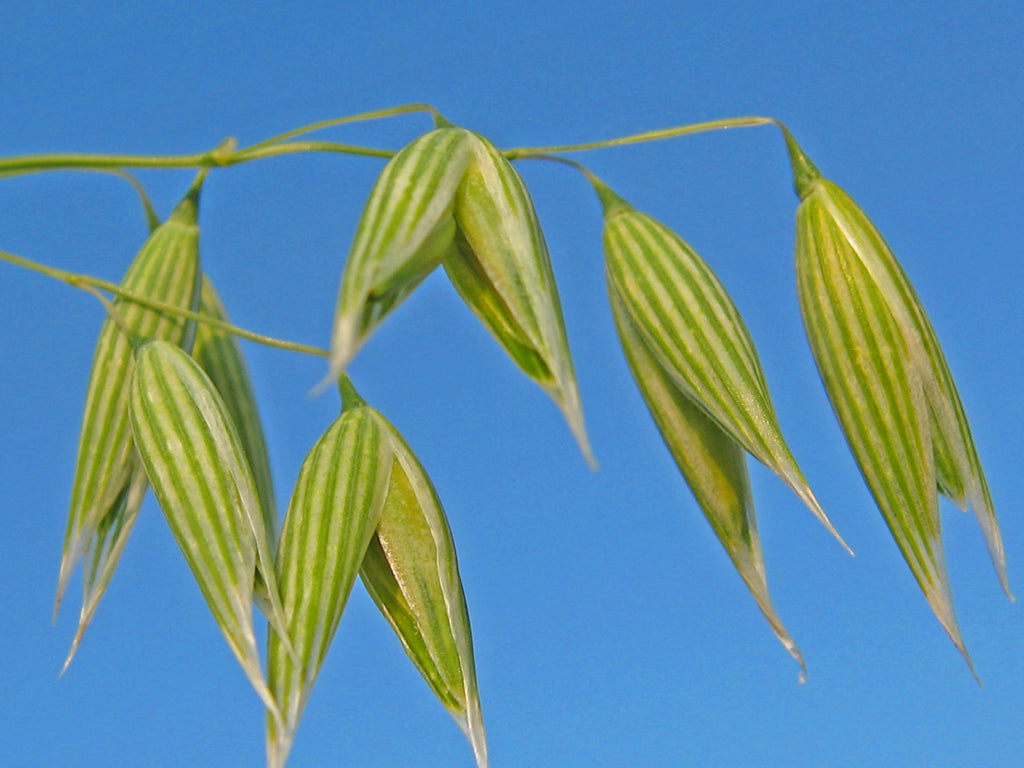
Fibers - revealed!
We all know how important fibers are in our diet to protect against diseases like cancer, Type 2 diabetes and even heart disease, but the right fibers help us stay fuller longer and ward us off of cravings. So what is fiber and what are the right fibers?
According to a publication in the Harvard Nutrition Science, "Fiber is a type of carbohydrate that the body can’t digest. Though most carbohydrates are broken down into sugar molecules, fiber cannot be broken down into sugar molecules, and instead it passes through the body undigested. Fiber helps regulate the body’s use of sugars, helping to keep hunger and blood sugar in check."
Fiber comes in two varieties, both beneficial to health:
- Soluble fiber, which dissolves in water, can help lower glucose levels as well as help lower blood cholesterol. Foods with soluble fiber include oatmeal, nuts, beans, lentils, apples and blueberries.
- Insoluble fiber, which does not dissolve in water, can help food move through your digestive system, promoting regularity and helping prevent constipation. Foods with insoluble fibers include wheat, whole wheat bread, whole grain couscous, brown rice, legumes, carrots, cucumbers and tomatoes.
The best sources of fiber are whole grain foods, fresh fruits and vegetables, legumes, and nuts.
Some tips for increasing fiber intake:
- Eat whole fruits instead of drinking fruit juices.
- Replace white rice, bread, and pasta with brown rice and whole grain products.
- For breakfast, choose cereals that have a whole grain as their first ingredient.
- Snack on raw vegetables instead of chips, crackers, or chocolate bars.
- Substitute beans or legumes for meat. Try soups, casseroles, and chili recipes. Good for your heart and good for your body.
The average American consumes 15 grams/day, compared to the recommended 25 or 38 grams/day for women and men, respectively.
